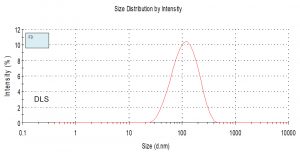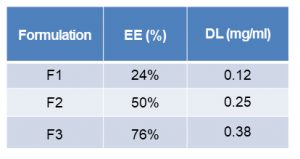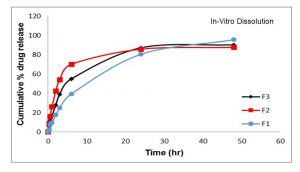Issue:October 2020
FORMULATION FORUM - Parenteral Sustained Delivery of ASD-005 Liposomal Formulation: A Case Study in Applications of Lipid-Based Nanoparticle Carriers
INTRODUCTION
Lipid-based colloidal nanocarriers, which can be administered by a parenteral route, hold great promise in safely delivering therapeutic agents due to their advantageous properties in having excellent biocompatibility, potential for sustained drug delivery, ability to encapsulate both hydrophilic and hydrophobic drugs, and site-specific active or passive targeting. Among lipid-based dosage forms, examples include liposomes, which primarily consist of phospholipids, lipoplexes, which are lipid-based assemblies of DNA with lipids, solid lipid nanoparticles, and nano-structure lipid carriers.
ASD-005 is a non-selective adrenergic receptor blocker. Primary mechanism of action is inhibiting β-blocker receptors on myocytes slowing down the contractility of the heart, thus lowering heart rate. Another mechanism of action is through blocking α-receptors that cause vasodilation. However, ASD-005, which is a hydrophobic and insoluble drug, has low oral bioavailability and a short body half-life.
The present investigation is aimed at studying the administration of a liposomal form of a third-generation β-blocker, ASD-005, by injectable route of administration to efficiently manage emergency hypertension and congestive heart failure. In a hypertensive emergency, patients experience elevated blood pressure that could lead to damage to the brain or cardiovascular system. First-line drugs that are typically used for IV infusion can produce rapid lowering blood pressure that unfortunately could lead to hypotension in patients. Nitrates, such as nitroprusside, are rapidly broken down into nitric oxide and cyanide that can produce cyanide toxicity in some patients.
PREPARATION METHODS
PEGylated liposomes were used as a carrier for ASD-005 in varied molar ratio of DMPC:DMPG:DSPE with various drug loadings (F1, F2, and F3). The process methods, including film forming and hydration, solvent injection, high- pressure homogenization, and extrusion (Figure 1) were evaluated. Briefly, liposomes were loaded with ASD-005 and allowed to dialyze overnight. Nanoparticle morphology was characterized by microscopy, SEM, and DSC. Particle size distribution and zeta potential were measured using a Malvern Zeta-Sizer. Drug loading and encapsulation efficiency were quantified by HPLC. In-vitro drug release was performed at different temperatures in PBS media with 0.05%Tween 80. Liposomal formulations were optimized for drug stability and drug release. Animal PK study of the liposomal formulations and IV solution was conducted in rat.

Figure 1. Process flow chart of liposomal formulations. A) DMPC, DMPG, DSPE lipids were solubilized in a solvent to which ASD-005 drug was introduced, B) solvent was evaporated, C) solvent was subsequently rehydrated in saline, and D) particle size was reduced by homogenizer to 100-nm to 150-nm range.(Click image to enlarge)
CHARACTERIZATION RESULTS
The surface morphology of liposomal formulations of ASD-005 were characterized with scanning electron microscopy (SEM), dynamic light scattering (DLS) and differential scanning calorimeter (DSC) (Figure 2) (Table 1). SEM shows well-defined spherical nanoparticles for all three formulations, and the average size distribution of negative-charged liposomal ASD-005 were in the range of ~100-150 nm. F3 formulation showed the higher encapsulation efficient and drug loading (Table 2).
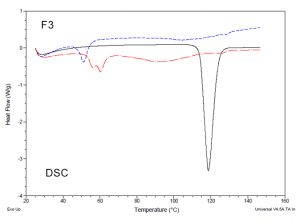
Figure 2. Characterization of ASD-005 liposomal nanoparticles by SEM, DLS, and DSC. (Click image to enlarge)

Table 1. Mean particle size and mean zeta potential of the three liposomal formulations. (Click image to enlarge)
DSC analysis of the lyophilized liposomal ASD-005, physical mixture of the lipids, and ASD-005 compound itself is shown in Figure 2. DSC thermographs reveal a sharp endothermic peak at 117°C corresponding to ASD-005 (black). Compilation of broad double peak extending from 45°C to 60°C was observed in the physical mixture of liposomal formulation (red), which changed to single small broad peak after lyophilization (blue). The disappearance of sharp melting peak demonstrates conversion of ASD-005 from crystalline API to an amorphous form.
Stability of the ASD-005 F3 formulation was also evaluated under different conditions, which indicated that the F3 formulation is stable for at least 1 month at 40°C/75%RH, room temperature, and 5°C (Table 3).
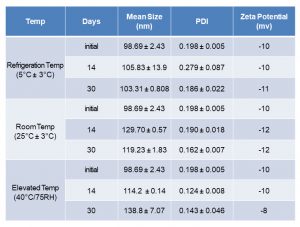
Table 3. Short-term physical stability of F3 formulation at different temperatures. (Click image to enlarge)
IN-VITRO DISSOLUTION & IN-VIVO STUDY
In-vitro dissolution of liposomal ASD-005 was conducted in PBS buffer with 0.5%w/v Tween 80 under a pH of 6.5 and a temperature of 37°C (Figure 3). An in-vitro sustained-release profile of ASD-005 from those formulations was demonstrated for up to 48 hours. The PK data of those liposomal formulations after IV bolus injection in rats confirmed the in-vivo sustained-release properties of the ASD-005 liposomal formulations for at least 24 hours, whereas the IV solution of the ASD-005 compound is rapidly cleared from the rat body within 4 hours (Figure 3A & 3B).

Figure 3B. In-vivo sustained-release PK profile of ASD-005 liposomal formulations versus IV solution. (Click image to enlarge)
SUMMARY
The study shows encapsulation of ASD-005 into a liposomal formulation with a nano-size range of 100 nm to 150 nm and with good physical stability. DSC thermogram indicated that ASD-005 is present inside the liposomal formulation as an amorphous form. Parenteral administration of liposomal ASD-005 has a rapid onset effect of lowering hypertension followed by sustained release of the drug inside the animal body for at least 24 hours. Thus, the ASD-005 liposomal formulation avoids the rapid clearance that was experienced with the IV solution of the ASD-005 compound. The results of the present investigations suggest that the liposomal form of ASD-005 present an attractive sustained drug delivery for effective parenteral treatment of acute hypertension and congestive heart failure.
ACKNOWLEDGEMENT
The author would like to thank the following scientists for their contributions of the scientific data generated under Ascendia’s labs: Drs. Vera Ivanova, Kaoru Tominaga, and Zhao Liu.

Jim Huang, PhD
Founder & CEO
Ascendia Pharmaceuticals
j.huang@ascendiapharma.com
www.ascendiapharma.com
Total Page Views: 6087






